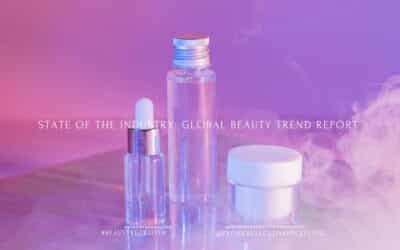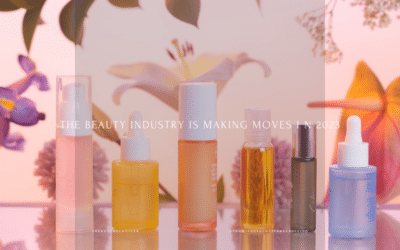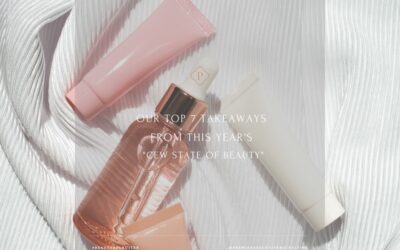With the new year and a fresh start, there’s a spotlight on clean eating, but what about clean beauty? It’s the latest movement generating buzz, and our TODAY Style Squad member Bobbie Thomas is here to break it all down for us.
Did you know that the FDA doesn’t have to approve beauty and skin care products before they hit store shelves? It’s true (as Lauren Sucher, a press officer for the FDA, confirmed to TODAY Style in 2016), and while that doesn’t necessarily mean they are harmful, it does put a lot of responsibility on us as consumers to be mindful of what we’re using everyday. (Basically, we need to read the fine print.)
“We can only take action within our legal authority, our limited information and our limited resources,” Sucher said. “We can ask a company to recall a problem product, and we’ll work with them to make sure the recall is effective.”
Intentionally or not, the packaging of a product can be misleading; it doesn’t always match what’s inside, or what’s on the ingredient list. Buzzwords like “natural,” “pure,” “botanical” and “eco” are not regulated, Sucher confirmed. Statements like “free of” or “benefits include” can also distract us from figuring out what’s included in the product. Other marketing tactics like deceptive design using the color green or images of leaves and plants can be misleading, too.
But by turning around the bottle, box, tube or jar, we can learn vital information we need to know about the skin care we use everyday. You’ll notice there are symbols and stamps like USDA Organic, Non-GMO and EWG, which signal verification from various sources. A stamp doesn’t necessarily mean the product is safer, but it does indicate that it’s passed certain guidelines. Be sure to double check the legitimacy of all organizations before you trust their approval! (For more information about decoding beauty labels and symbols, download this chart and see this helpful article.)
TODAY reached out to representatives from the Personal Care Products Council, which comprises most of the major cosmetic brands in the U.S., for a response in 2016.
“Personal care products remain one of the safest product categories regulated by FDA,” they wrote in a statement. “The industry takes its responsibility for product safety very seriously. Consumers can continue to use the personal care products they have trusted and relied on for more than 100 years.”
WHAT’S THE “CLEAN” CONCEPT?
What exactly does “clean beauty” mean, and what makes it new and different from other beauty trends?
While there isn’t a singular definition, the clean beauty movement embraces both natural and man-made ingredients, putting the focus on safety over source. Not all “natural” ingredients are safe (i.e. lead or poison ivy) and not all synthetic ingredients are unsafe. Most clean beauty products avoid the use of ingredients like parabens, sulfates, silicones, phthalates and synthetic fragrances while still delivering results. (Refer to this article for more information on these ingredients.)
Consumer demand has been the top driver for the growth of the clean beauty movement, with NPD Group (a marketing research company) reporting 10 percent growth in the natural beauty market, versus just 3.8 percent for mass and prestige products. Beauty retailers big and small are responding to the demand.
- Credo Beauty carries safe and nontoxic beauty products both online and in stories; they have eight retail locations and are still growing.
- Beauty store and site Follainis strict when it comes to product curation. They focus on safety and performance, and thanks to their great assortment of prestige skin care and beauty products, their online destination is gaining popularity.
- Target has announced a new “chemical strategy” it hopes to have in full effect by 2020: promoting full ingredient transparency and banning ingredients like phthalates, formaldehyde and a variety of parabens from all of their beauty, baby, personal care and household cleaning products. One specific example is the launch of C’est Moi, a “thoughtfully formulated” clean beauty brand aimed at teens and young adults with 38 products across skin care and color cosmetics, priced from $8 for an eyeliner pencil to $26 for a three-piece skin care set.
- CVS— which has almost 10,000 pharmacies around the U.S. — announced last year that by 2019, it will have removed all potentially toxic ingredients from its in-house personal care and baby brands, which encompasses about 600 products.
You may have also noticed that Sephora has started to include a bulleted list of “What it is formulated WITHOUT” under each product description, regardless of whether the brand identifies as natural or clean. And back in 2014, Birchbox created a special section of Ingredient-Conscious Picks, making it easier for customers to make informed purchases.
https://www.today.com/style/what-clean-beauty-understanding-what-s-your-beauty-products-t121228
If enthusiastic online reviews of brands like Tata Harper and Drunk Elephant are to be believed, clean beauty products can deliver amazing results along with piece of mind. The truth is, as this movement continues to grow, more proof will be needed to support the claims and convert more consumers to clean beauty.


